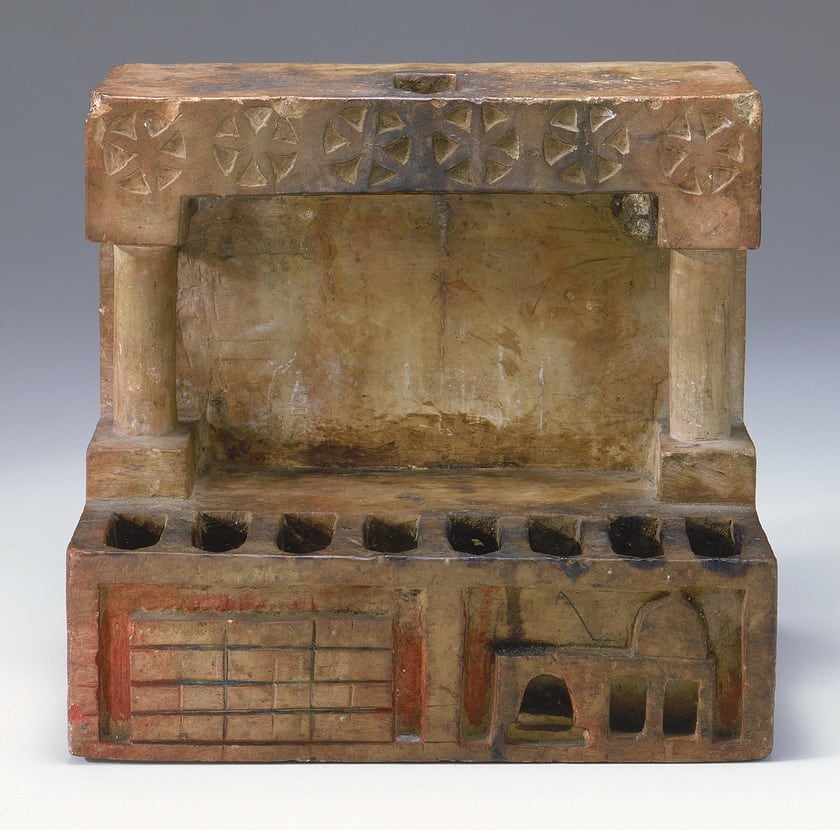
- Object Name:
- Hanukkah Lamp
- Place Made:
- Ottoman Empire or British Mandate Palestine (now Israel)
- Date:
- c. 1880–1930
- Medium:
- Limestone: chiseled, incised, and painted
- Dimensions:
- 8 3/8 × 9 1/4 × 6 in. (21.2 × 23.5 × 15.2 cm)
- Credit Line:
- Gift of the Collection of Oscar and Regina Gruss
- Accession Number:
- 1994-706
On View
Stone Hanukkah lamps are known from only three regions: Morocco,Yemen, and Avignon, France, the last-named a unique and very early example of medieval date. They all share the same block form with oil wells carved out on the top. It has been suggested that their use in such far-flung locales may present the survival of an ancient custom of using stone lamps, perhaps originating in Israel. This theory is difficult to substantiate, however, since stone lamps of this blocklike form are unknown from archaeological excavations in Israel up through the Byzantine period.
The stone lamp in the Jewish Museum collection is of Yemenite type, possessing the rowboat-shaped oil wells typical of both secular and ritual lamps from that country. However, its architectural form as well as its carved and painted decoration are completely unknown on Hanukkah lamps made in Yemen. This more elaborate lamp represents an adaptation by Yemenite immigrants, who first came to Palestine around 1880. Finding work in the stone-cutting trade, they would occasionally make stone lamps while constructing houses. This production continued through the 1930s.
The architectural form of the lamp, with its two columns supporting an architrave decorated with rosettes, echoes the ancient Roman-period tombs carved into the rocks around Jerusalem. These could easily have served as the inspiration for the lamp. On the front of the bench are depictions of two important Jewish sites in Israel: a wall, most likely the Western Wall in Jerusalem, and a domed structure, probably the tomb of the matriarch Rachel.
The stone lamp in the Jewish Museum collection is of Yemenite type, possessing the rowboat-shaped oil wells typical of both secular and ritual lamps from that country. However, its architectural form as well as its carved and painted decoration are completely unknown on Hanukkah lamps made in Yemen. This more elaborate lamp represents an adaptation by Yemenite immigrants, who first came to Palestine around 1880. Finding work in the stone-cutting trade, they would occasionally make stone lamps while constructing houses. This production continued through the 1930s.
The architectural form of the lamp, with its two columns supporting an architrave decorated with rosettes, echoes the ancient Roman-period tombs carved into the rocks around Jerusalem. These could easily have served as the inspiration for the lamp. On the front of the bench are depictions of two important Jewish sites in Israel: a wall, most likely the Western Wall in Jerusalem, and a domed structure, probably the tomb of the matriarch Rachel.
Information may change as a result of ongoing research.